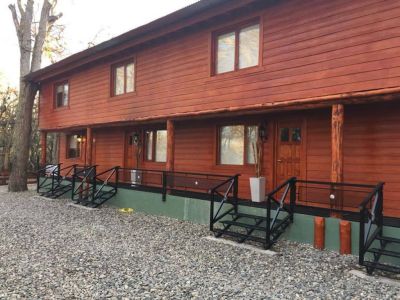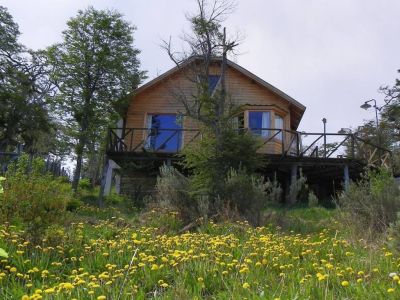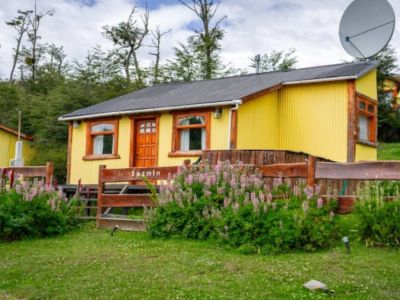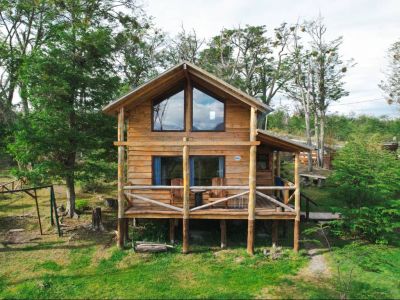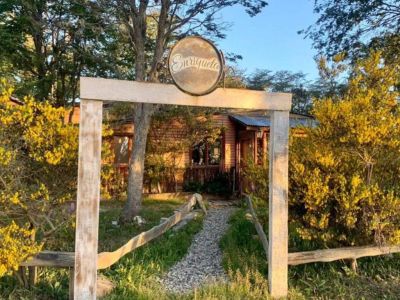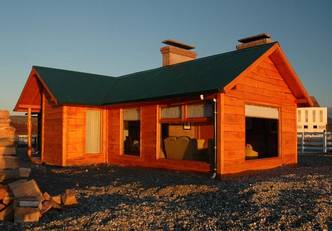
The reddish lenga woods, the transverse valleys and the endless lakes are the ideal scenery for tough hikes, where hikers can also enjoy the particular symbiosis between the fresh and salt water environments along their way.
For enthusiasts of adventure sport experiences, a tour around
Tolhuin and the exploration of its natural areas along unusual paths is a synonym for guaranteed adventure. The Andes mountain range stretches in a west-east direction and gets into the sea dividing the island into two separated areas, which give the characteristic feature of the landscape of Tierra del Fuego. From the City of Río Grande going past Tolhuin on the way to Ushuaia, National Route 3 runs downhill from the steppe, the last Selk'nam reserve, up to the mountain and crosses the mountain range from north to south. Tolhuin is a transition area and offers various water bodies such as Lakes Yehuin, Fagnano and Chepelmuth, all of them good spots for trout fishing surrounded by low lush wooded hills. Tourists can walk around the protected areas in the
Laguna Negra (Lake Black) Provincial Reserve, along paths leading directly to the vantage point called
Península del Viento (Wind Peninsule) and to the
Corazón de la Isla (The Island Heart) Provincial Reserve.

Several vantage points on the Jeujepén and Shenolsh Hills can be reached after short hikes with various ratings of difficulty and distance. It is just a matter of talking with a resident for a while to get the proper road to reach these magical spots. If we head westwards to the mountain range, we find the National Park Tierra del Fuego, where nature is still unspoiled. The only steady population here is made up of beavers, small mammals introduced from Canada to this area 50 years ago which use to build dams causing an impact on water levels and the ecosystem as well. Another interesting option is to follow National Route 3 southwards to get to know other hiking trails. The area of Lake Escondido (Hidden Lake) has amazing paths, where the Garibaldi Pass stands out, the highest spot in the road from where we can admire the vastness of the water body. Farther ahead, the mountain range goes downhill and the route starts to go deeper into thick lush forests and valleys of glacial origin with peatlands, that is, wetlands of soft spongy ground that result in peat.

Even when 20 kilometers were left to reach the City of Ushuaia, we found the Tierra Mayor Valley, where there is such a number of possibilities to experience adventure that it is necessary to stay overnight to pick some of them. Real mountaineers usually choose the Alvear hill because of its three glaciers and ascent routes with different ratings of difficulty, which require a minimum sport experience. The mountain refuges Haruween, Solar del Bosque and Nunatak provide activities in the winter and summer seasons. Whether it is for a few hours or all day, hiking allows walkers to gain height and appreciate the source of rivers and the panoramic views of valleys and mountains all around. Southwards visitors can reach the valley of Lake Emerald and enjoy the view of Bonete, Alvear, Domo Blanco and Rino Hills. For those who are fully equipped and want to do camping and ice climbing,
Ojo El Albino Glacier is a good place to explore. Then, when our tired bodies needed a rest, long chats about the times lived completed the experience. The color of trees, the perfume of the environment and the sound of nature came to life and remained inside us forever. Taking care of these natural wonders is the only duty of every man during their ephemeral journey through this area.












